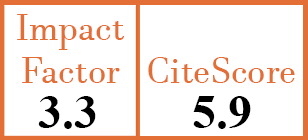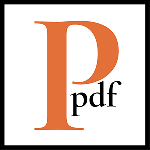Full Papers
Efficacy and safety of monoclonal antibody AK111 in the treatment of active ankylosing spondylitis: a randomised, double-blind, placebo-controlled, multicentre phase II clinical study
H. Ye1, S. Liu2, Y. Mei3, J. Gu4, M. Yang5, L. Zhang6, G. Wang7, Z. He8, F. Wu9, Y. Zheng10, M. Xia11, B. Li12, Z. Li13
- Department of Rheumatology and Immunology, Peking University People’s Hospital, Beijing, China.
- The First Affiliated Hospital of Zhengzhou University, Henan, China.
- The First Affiliated Hospital of Bengbu Medical University, Anhui, China.
- The Seventh Affiliated Hospital, Sun Yat-sen University, Guangdong, China.
- Nanfang Hospital, Guangzhou, China.
- Akeso Biopharma, Inc., Zhongshan, China.
- Akeso Biopharma, Inc., Zhongshan, China.
- Akeso Biopharma, Inc., Zhongshan, China.
- Akeso Biopharma, Inc., Zhongshan, China.
- Akeso Biopharma, Inc., Zhongshan, China.
- Akeso Biopharma, Inc., Zhongshan, China.
- Akeso Biopharma, Inc., Zhongshan, China.
- Department of Rheumatology and Immunology, Peking University People’s Hospital, Beijing, China. tou.gao@akesobio.com
CER18417
Full Papers
PMID: 41105460 [PubMed]
Received: 06/12/2024
Accepted : 28/07/2025
In Press: 16/10/2025
Abstract
OBJECTIVES:
The primary objective of the study was to evaluate the efficacy and safety of the monoclonal antibody AK111 in participants with active ankylosing spondylitis (AS).
METHODS:
Adult participants who met the Modified New York Criteria for Ankylosing Spondylitis revised in 1984 were randomly assigned to the AK111 75 mg, 150 mg, 300 mg group or placebo group with the ratio of 1:1:1:1. Each participant received 5 subcutaneous (SC) injections of the study drug (week 0/1/4/8/12). The primary efficacy endpoint of this study was the percentage of participants who reached the Assessment of SpondyloArthritis International Society (ASAS) 20 response at week 16. The key secondary endpoint was the percentage of participants who reached the ASAS 40 response at week 16.
RESULTS:
A total of 125 participants were randomly enrolled in this study. The ASAS 20 response rates at week 16 in the AK111 75 mg, 150 mg, and 300 mg groups were 80.6%, 71.9%, and 66.7%, respectively, each of which was higher than the placebo group (37.5%). The overall response rate of ASAS 40 in the AK111 group was also better than the placebo group. The incidence rate of treatment emergent adverse events (TEAEs) after receiving AK111 75 mg, 150 mg, 300 mg, and placebo group was 93.5% (29/31), 75.0% (24/32), 73.3% (22/30), and 75.0% (24/32), respectively; the incidence of drug-related AEs was 58.1% (18/31), 50% (16/32), 50% (15/30) and 43.8% (14/32), respectively. The majority of the TEAEs were grade 1 and 2 in severity. No neutralising antibody positivity was found during the study.
CONCLUSIONS:
The humanised monoclonal antibody AK111 was safe and well tolerated in treating AS and showed a good efficacy by improved ASAS 20/ASAS 40 response.


